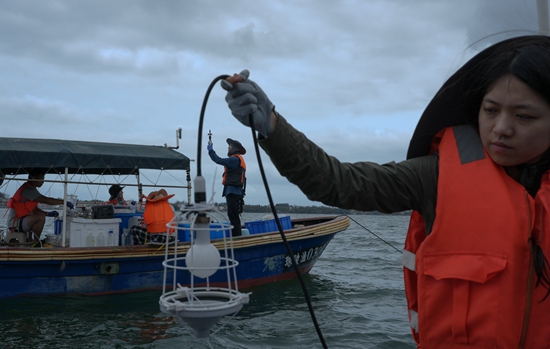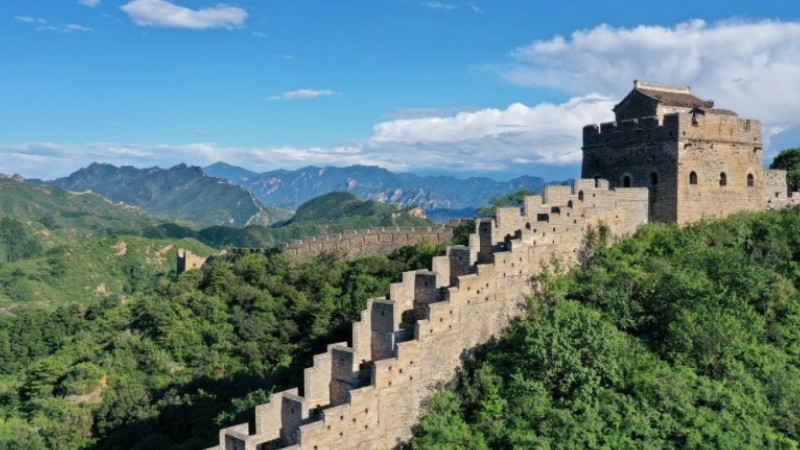Xiamen University's young researchers explore seaweed's role in carbon capture
 |
| Gu Xiaoxuan (first from right) conducts research on ocean carbon sinks at Li’an Lagoon, Lingshui Li Autonomous County, Hainan Province, China, April 6, 2023. (Photo/Zhang Mao) |
Seen from above, Li’an Lagoon in Lingshui Li Autonomous County, located in south China's Hainan Province, resembles a massive, clear eye, its pupil a vast green expanse of seaweed.
In the early hours of an August day, several research vessels were spotted at the lakeside. Onboard were members of a research team preparing to study the role of seaweed beds in carbon sequestration.
The research team consisted of 20 members, with the youngest being just 20 years old. They hailed from the State Key Laboratory of Marine Environmental Science at Xiamen University in Fujian Province, Southeast China. The team, which included undergraduate, graduate, and doctoral students, was led by a researcher named Shen Yuan.
"We conduct experiments on seaweeds and their habitats," said Shen. Seaweed beds can absorb carbon dioxide, capturing and burying significant amounts of carbon in sea sediments. Despite occupying less than 0.2 percent of the world's total sea area, these beds account for about 10 percent of the marine organic carbon burial.
Hainan is one of the provinces in China where seaweeds are most widely distributed. Lingshui Li Autonomous County is home to the country’s first protected seaweed ecosystem area.
"Blue carbon" refers to carbon absorbed by ocean and coastal ecosystems. Enhancing these carbon sinks is crucial for achieving China’s carbon peak and neutrality goals.
Currently, there's no standardized method, either in China or globally, for calculating the carbon sinks of seaweed beds. Shen mentioned that their research aims to determine the carbon sink potential, capacity, and cycle of typical Chinese seaweed ecosystems, hoping to provide data to refine methodologies in this area.
The researchers collected samples of seawater, the atmosphere, zooplankton, and phytoplankton for analysis.
Data was sometimes collected in hot and humid conditions, spanning up to 72 hours. Upon arrival, the team coordinated with local fishermen to ensure safety. They also collected various benthonic animals for lab analysis to study the area’s biodiversity.
"We established 25 monitoring sites at Li’an Lagoon to try to obtain data from the seaweed beds in a comprehensive manner. With this data and by collaborating with experts in the fields of oceanology and ecology, we are trying to work out a unified standard for seaweed bed carbon sink calculation,” said Gu Xiaoxuan, a postdoctoral researcher from Xiamen University.
In order to analyze the samples as early as possible and guarantee the effectiveness of the data, the researchers brought some experimental equipment to a temporary lab in Hainan. After being processed in the lab, the samples were sent to Xiamen University for further analysis.
Over the past year, Xiamen University’s State Key Laboratory of Marine Environmental Science has carried out three significant experiments in Lingshui Li Autonomous County.
 |
Photos
Related Stories
- Belgian reporter explores China's low carbon practice
- Brazilian reporter explores China's low carbon practices
- Suzhou: thriving in the era of low carbon emissions
- International students embark on dual carbon journey in China
- Expats share their views on China's green development
- Suzhou pursues China's "dual carbon" goals through innovation
Copyright © 2023 People's Daily Online. All Rights Reserved.









